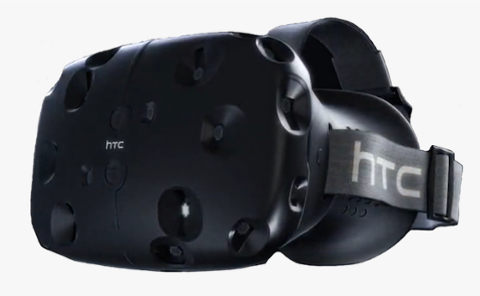 This past holiday season was the first with a variety of virtual-reality devices on the market. With that big milestone out of the way, how are the various VR platforms faring with consumers? According to Tim Sweeney, founder of Epic Games (which produced the Unreal Engine, used by many a development firm to build games), PC-based VR has collectively sold around half-a-million units. “HTC Vive is outselling Oculus 2-to-1 worldwide,” he said in a very lengthy (and fascinating) interview with Glixel. “I think that trend will continue.” To what does Sweeney attribute Vive’s early victory over Oculus? Openness. Thanks to HTC’s partnership with Valve on VR, Vive users can access Steam, the massive game-distribution platform that’s a favorite of smaller developers. That’s a marked difference from the model embraced by the creators of Oculus Rift, which is owned by Facebook. “When you install the Oculus drivers, by default you can only use the Oculus store. You have to rummage through the menu and turn that off if you want to run Steam,” Sweeney said. “Which everybody does. It's just alienating and sends the wrong message to developers.” But is Sweeney right about VR’s sales numbers? By October 2016, the HTC Vive had sold approximately 140,000 units, according to HTC’s co-founder. Subsequent reports suggested HTC had either shipped or sold hundreds of thousands of units: SuperData Research, for example, estimated 450,000 shipments by the end of November, while Canalys put the number a shade higher, at roughly a half-million. Compare that to shipments of the Oculus Rift, which SuperData placed at 360,000 units and Canalys at 400,000 units. And that was before the holiday shopping season, when lots of people presumably slapped down their plastic for a brand new VR experience. If you take those estimates at face value, then Sweeney is right about the HTC Vive moving more units, although it’s anyone’s guess whether that 2-to-1 ratio holds true. (With regard to these analyst reports, there’s also the question of whether every shipment translates directly into an end-user sale, which may not be the case.) At least in this nascent stage of the market, PC-based VR might end up outpaced by VR delivered via other means, most notably gaming consoles (Sony’s PlayStation VR, which leverages the computing power of the PlayStation 4) and smartphones (Google Cardboard, Samsung VR). Oculus Rift and HTC Vive owners must make a sizable investment in PC hardware in order to run their headsets, whereas other types of VR depend on technology that the user might already own. However, PC makers and developers may push for VR that can run efficiently on lower-spec machines, bringing those headsets within the grasp of a broader audience. If and when that happens, you could see higher rates of adoption for PC-based VR. Sweeney thinks that today’s bulky VR headsets will inevitably give way to lighter, sleeker hardware. “Over the next 12 years we're going to see VR scale down from a huge helmet to something the size of your glasses,” he told Glixel. “And that's going to revolutionize all forms of entertainment. Instead of having televisions and monitors and smartphone screens, you're going to have this VR device to project imagery wherever you want.” But in the meantime, it seems that the HTC Vive has a slight shipment advantage over Oculus Rift.
This past holiday season was the first with a variety of virtual-reality devices on the market. With that big milestone out of the way, how are the various VR platforms faring with consumers? According to Tim Sweeney, founder of Epic Games (which produced the Unreal Engine, used by many a development firm to build games), PC-based VR has collectively sold around half-a-million units. “HTC Vive is outselling Oculus 2-to-1 worldwide,” he said in a very lengthy (and fascinating) interview with Glixel. “I think that trend will continue.” To what does Sweeney attribute Vive’s early victory over Oculus? Openness. Thanks to HTC’s partnership with Valve on VR, Vive users can access Steam, the massive game-distribution platform that’s a favorite of smaller developers. That’s a marked difference from the model embraced by the creators of Oculus Rift, which is owned by Facebook. “When you install the Oculus drivers, by default you can only use the Oculus store. You have to rummage through the menu and turn that off if you want to run Steam,” Sweeney said. “Which everybody does. It's just alienating and sends the wrong message to developers.” But is Sweeney right about VR’s sales numbers? By October 2016, the HTC Vive had sold approximately 140,000 units, according to HTC’s co-founder. Subsequent reports suggested HTC had either shipped or sold hundreds of thousands of units: SuperData Research, for example, estimated 450,000 shipments by the end of November, while Canalys put the number a shade higher, at roughly a half-million. Compare that to shipments of the Oculus Rift, which SuperData placed at 360,000 units and Canalys at 400,000 units. And that was before the holiday shopping season, when lots of people presumably slapped down their plastic for a brand new VR experience. If you take those estimates at face value, then Sweeney is right about the HTC Vive moving more units, although it’s anyone’s guess whether that 2-to-1 ratio holds true. (With regard to these analyst reports, there’s also the question of whether every shipment translates directly into an end-user sale, which may not be the case.) At least in this nascent stage of the market, PC-based VR might end up outpaced by VR delivered via other means, most notably gaming consoles (Sony’s PlayStation VR, which leverages the computing power of the PlayStation 4) and smartphones (Google Cardboard, Samsung VR). Oculus Rift and HTC Vive owners must make a sizable investment in PC hardware in order to run their headsets, whereas other types of VR depend on technology that the user might already own. However, PC makers and developers may push for VR that can run efficiently on lower-spec machines, bringing those headsets within the grasp of a broader audience. If and when that happens, you could see higher rates of adoption for PC-based VR. Sweeney thinks that today’s bulky VR headsets will inevitably give way to lighter, sleeker hardware. “Over the next 12 years we're going to see VR scale down from a huge helmet to something the size of your glasses,” he told Glixel. “And that's going to revolutionize all forms of entertainment. Instead of having televisions and monitors and smartphone screens, you're going to have this VR device to project imagery wherever you want.” But in the meantime, it seems that the HTC Vive has a slight shipment advantage over Oculus Rift. Is Oculus or HTC Vive Winning the VR Wars?
 This past holiday season was the first with a variety of virtual-reality devices on the market. With that big milestone out of the way, how are the various VR platforms faring with consumers? According to Tim Sweeney, founder of Epic Games (which produced the Unreal Engine, used by many a development firm to build games), PC-based VR has collectively sold around half-a-million units. “HTC Vive is outselling Oculus 2-to-1 worldwide,” he said in a very lengthy (and fascinating) interview with Glixel. “I think that trend will continue.” To what does Sweeney attribute Vive’s early victory over Oculus? Openness. Thanks to HTC’s partnership with Valve on VR, Vive users can access Steam, the massive game-distribution platform that’s a favorite of smaller developers. That’s a marked difference from the model embraced by the creators of Oculus Rift, which is owned by Facebook. “When you install the Oculus drivers, by default you can only use the Oculus store. You have to rummage through the menu and turn that off if you want to run Steam,” Sweeney said. “Which everybody does. It's just alienating and sends the wrong message to developers.” But is Sweeney right about VR’s sales numbers? By October 2016, the HTC Vive had sold approximately 140,000 units, according to HTC’s co-founder. Subsequent reports suggested HTC had either shipped or sold hundreds of thousands of units: SuperData Research, for example, estimated 450,000 shipments by the end of November, while Canalys put the number a shade higher, at roughly a half-million. Compare that to shipments of the Oculus Rift, which SuperData placed at 360,000 units and Canalys at 400,000 units. And that was before the holiday shopping season, when lots of people presumably slapped down their plastic for a brand new VR experience. If you take those estimates at face value, then Sweeney is right about the HTC Vive moving more units, although it’s anyone’s guess whether that 2-to-1 ratio holds true. (With regard to these analyst reports, there’s also the question of whether every shipment translates directly into an end-user sale, which may not be the case.) At least in this nascent stage of the market, PC-based VR might end up outpaced by VR delivered via other means, most notably gaming consoles (Sony’s PlayStation VR, which leverages the computing power of the PlayStation 4) and smartphones (Google Cardboard, Samsung VR). Oculus Rift and HTC Vive owners must make a sizable investment in PC hardware in order to run their headsets, whereas other types of VR depend on technology that the user might already own. However, PC makers and developers may push for VR that can run efficiently on lower-spec machines, bringing those headsets within the grasp of a broader audience. If and when that happens, you could see higher rates of adoption for PC-based VR. Sweeney thinks that today’s bulky VR headsets will inevitably give way to lighter, sleeker hardware. “Over the next 12 years we're going to see VR scale down from a huge helmet to something the size of your glasses,” he told Glixel. “And that's going to revolutionize all forms of entertainment. Instead of having televisions and monitors and smartphone screens, you're going to have this VR device to project imagery wherever you want.” But in the meantime, it seems that the HTC Vive has a slight shipment advantage over Oculus Rift.
This past holiday season was the first with a variety of virtual-reality devices on the market. With that big milestone out of the way, how are the various VR platforms faring with consumers? According to Tim Sweeney, founder of Epic Games (which produced the Unreal Engine, used by many a development firm to build games), PC-based VR has collectively sold around half-a-million units. “HTC Vive is outselling Oculus 2-to-1 worldwide,” he said in a very lengthy (and fascinating) interview with Glixel. “I think that trend will continue.” To what does Sweeney attribute Vive’s early victory over Oculus? Openness. Thanks to HTC’s partnership with Valve on VR, Vive users can access Steam, the massive game-distribution platform that’s a favorite of smaller developers. That’s a marked difference from the model embraced by the creators of Oculus Rift, which is owned by Facebook. “When you install the Oculus drivers, by default you can only use the Oculus store. You have to rummage through the menu and turn that off if you want to run Steam,” Sweeney said. “Which everybody does. It's just alienating and sends the wrong message to developers.” But is Sweeney right about VR’s sales numbers? By October 2016, the HTC Vive had sold approximately 140,000 units, according to HTC’s co-founder. Subsequent reports suggested HTC had either shipped or sold hundreds of thousands of units: SuperData Research, for example, estimated 450,000 shipments by the end of November, while Canalys put the number a shade higher, at roughly a half-million. Compare that to shipments of the Oculus Rift, which SuperData placed at 360,000 units and Canalys at 400,000 units. And that was before the holiday shopping season, when lots of people presumably slapped down their plastic for a brand new VR experience. If you take those estimates at face value, then Sweeney is right about the HTC Vive moving more units, although it’s anyone’s guess whether that 2-to-1 ratio holds true. (With regard to these analyst reports, there’s also the question of whether every shipment translates directly into an end-user sale, which may not be the case.) At least in this nascent stage of the market, PC-based VR might end up outpaced by VR delivered via other means, most notably gaming consoles (Sony’s PlayStation VR, which leverages the computing power of the PlayStation 4) and smartphones (Google Cardboard, Samsung VR). Oculus Rift and HTC Vive owners must make a sizable investment in PC hardware in order to run their headsets, whereas other types of VR depend on technology that the user might already own. However, PC makers and developers may push for VR that can run efficiently on lower-spec machines, bringing those headsets within the grasp of a broader audience. If and when that happens, you could see higher rates of adoption for PC-based VR. Sweeney thinks that today’s bulky VR headsets will inevitably give way to lighter, sleeker hardware. “Over the next 12 years we're going to see VR scale down from a huge helmet to something the size of your glasses,” he told Glixel. “And that's going to revolutionize all forms of entertainment. Instead of having televisions and monitors and smartphone screens, you're going to have this VR device to project imagery wherever you want.” But in the meantime, it seems that the HTC Vive has a slight shipment advantage over Oculus Rift. 


